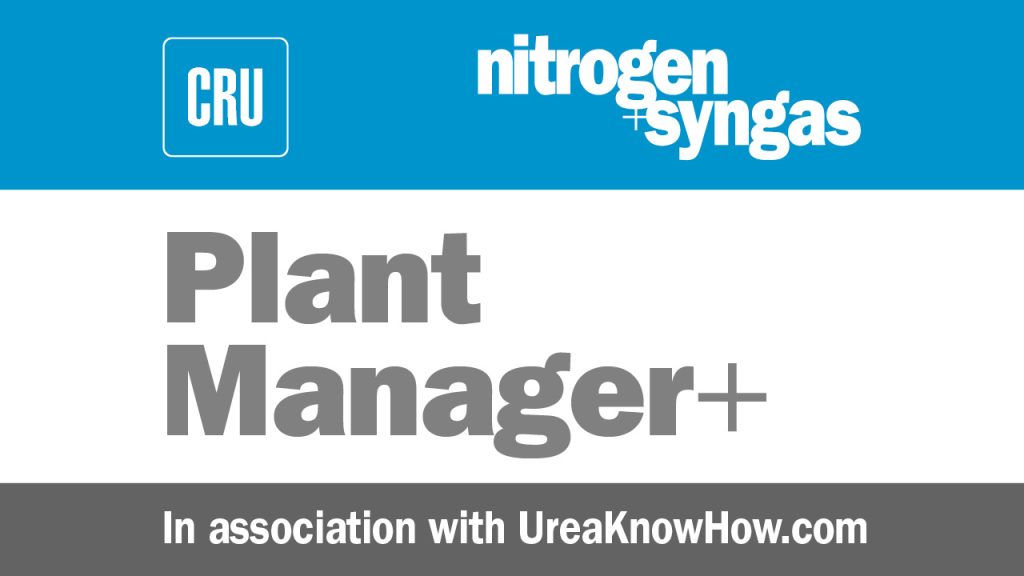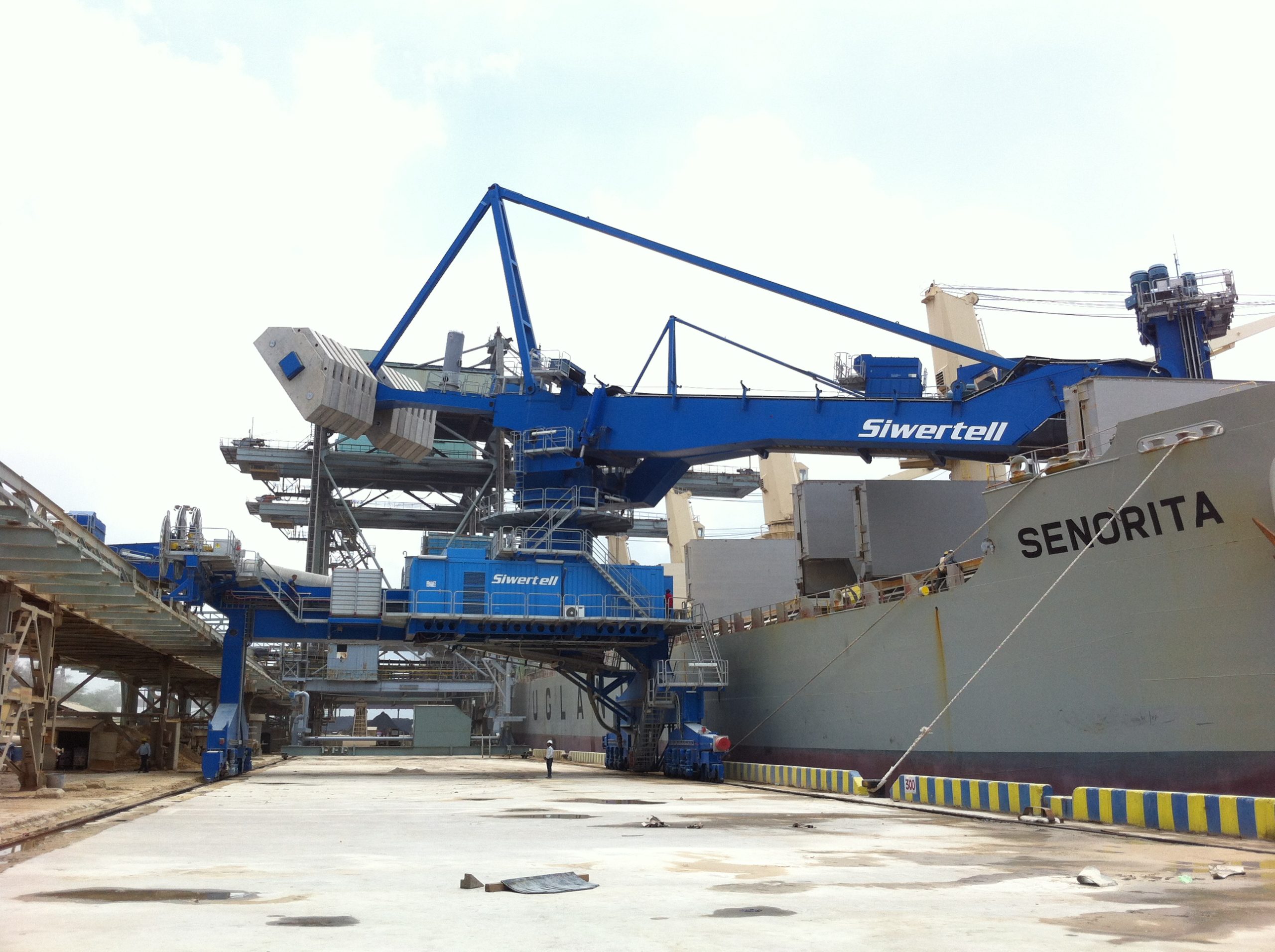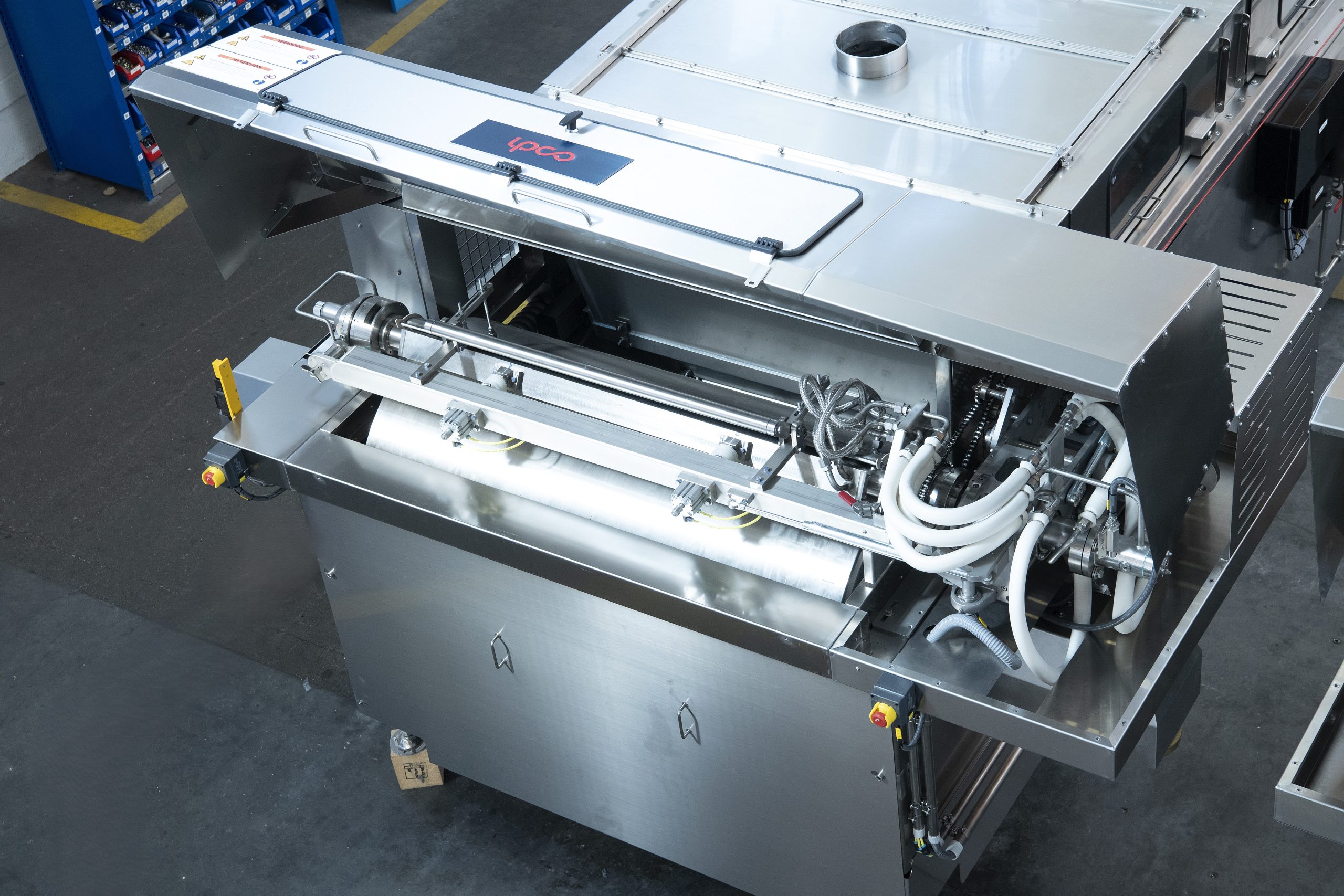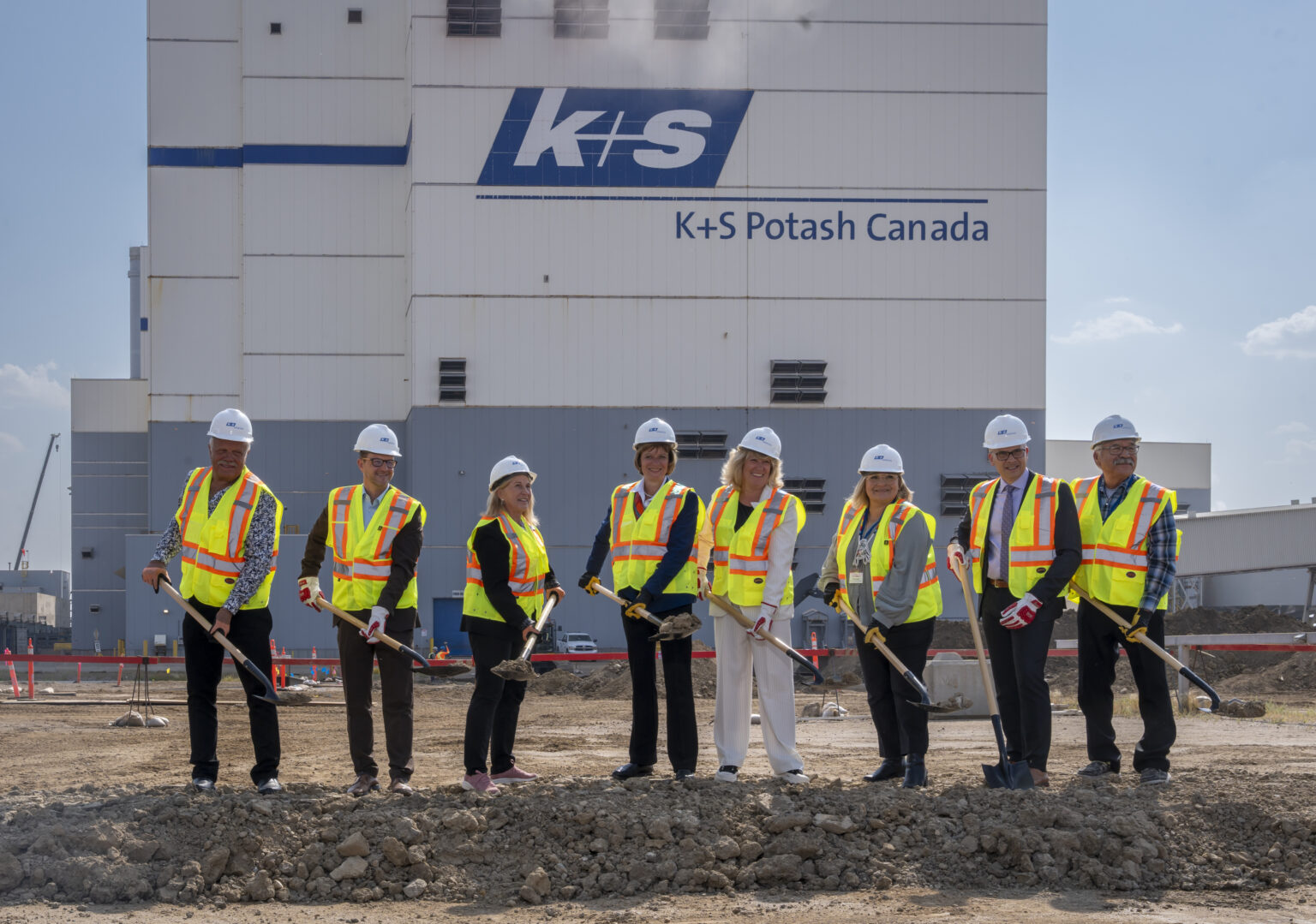Nitrogen+Syngas 328 Mar-Apr 2014

30 April 2014
Problem No. 23: CO₂ compressor capacity limitation
The CO2 compressor in a urea plant is a unique and interesting high-pressure rotating piece of equipment. CO2 is compressed from more or less atmospheric conditions to supercritical conditions. The CO2 is saturated with water, mixed with air and sometimes contaminated with the absorption solution from the ammonia plant. This means that its behaviour is not always easy to predict and having sufficient experience is very important. As the CO2 compressor is often a limiting factor in the urea plant, how best to debottleneck it is always an interesting topic.

Mr Faisal Ghadoor of Fertil in the UAE initiates the following discussion: We are operating a CO2 compressor at a suction temperature/pressure of 50°C/0.5 kg/cm2g and a discharge pressure of 139 kg/cm2g. The limitation is the third stage pressure (67.7 kg/cm2g), which is quite near to the PSV setting (70 kg/cm2g).
Can anybody share their experience or give their technical opinion on the following: If we bypass the chiller and allow a higher gas temperature of 58°C and a higher suction gas pressure of 0.62 kg/ cm2g, what would the impact be on the interstage pressures/temperatures if we keep the discharge pressure constant at 139 kg/cm2g by adjusting the rpm of the machine?
Mr Muhammad Kashif Naseem of SABIC in Saudi Arabia replies: Your increase in temperature will increase the energy consumption of the turbine/motor and also increase the interstage temperature. There are compressors in the world operating at 0.85 to 1.0 barg suction pressure and temperatures of 38 to 50°C, but the drawback will be that more energy will be required in the ammonia plant CO2 desorber due to the higher pressure.
Faisal replies: The pressure at the CO2 desorber is 0.68 kg/cm2g. We are cooling the CO2 gas in a chiller from 60 to 50°C, but it is causing a pressure drop, leading to 0.5 kg/cm2g pressure at the compressor suction.
Mr Girish Prakash of Tata Chemicals Ltd in India asks for a clarification: The pressure drop across the chiller seems to be high. Is it possible to reduce the pressure drop across the chiller?
Faisal replies: No, that is not possible.
Mr Chander Mohan Goutam of NFL in India asks for some more information: What are the suction and discharge pressures of each stage?
Faisal replies: T°C/P kg/cm2a: 1st stage suction: 51/1.5, 1st stage discharge: 195/5.4, 2nd stage suction: 37.5/4.3, 2nd stage discharge: 203/18.6, 3rd stage suction: 29.5/18, 3rd stage discharge: 201/68.6, 4th stage suction: 37/68.3 and 4th stage discharge: 152/141.
Muhammad Kashif asks for some clarification and suggests a possible solution: Please define the Nm3/h flow value of the machine and the power. If you use the scrubbing system for cooling the CO2 I suggest you change your first inlet cooler to a cooler with a coolant media to cool the CO2. This will reduce your pressure drop and decrease the energy consumption.
Mr Muhammad Farooq of Sabic-Safco in Saudi Arabia provides his analysis: From the data it seems that the discharge temperatures across your CO2 machine is too high, which is affecting the capacity. In order to improve the machine you need to decrease the discharge temperature at each stage, especially at the first stage by installing a chiller. In my view the suction temperature can be reduced from 51 to 20°C. We have already done it with our CO2 compressor. Is the 4th suction temperature correct?
Mr Javed Gujjar of Agritech Limited in Pakistan also finds some of the data odd: Normally there is a concept of LP/HP casings in high pressure centrifugal compressors. These casings are designed to keep the machine away from the thrust. I have experience with two machines and have seen that almost 25% of the total pressure load remains on the LP casing and 7% remains on the HP casing. But according to your data you are making 12% of total pressure in the LP casing and 88% in the HP casing, which will definitely put some limitations for margin of PSVs on the HP stages. Has your third discharge pressure always been so or has it changed since it was first started up?
Mr Ahsan Muhammad Sarfraz of Fatima Fertilizer Ltd in Pakistan contributes his ideas and suggestions: What I conclude from your query is that you want to increase the load across the compressor while the major limitation seems to be across the third stage which is already operating near to the maximum discharge pressure. Besides this limitation can you tell me if there is sufficient margin available in your turbine and compressor speed? In my opinion, as your fourth suction is lower than the critical pressure you can afford to lower the fourth suction. The focus should be to shift more of the load on the fourth suction, which will really prove helpful in increasing the overall load with little increase of the third discharge pressure. This is generally covering the limitation across the third stage and the rest is taken as normal.
Mr Rajeev Gupta of GPIC in Bahrain shares his experiences: I would not recommend doing anything without considering the stage specific surge curves as any change in these process variables will cause the operating point to shift and can cause instability in operation of the machine. Also, the prolonged usage of the machine since its commissioning might have caused a drift in the original surge curves supplied by the manufacturer. I think it will be best to consult the supplier and maybe you should carry out a surge test in co-ordination with the manufacturer to evaluate the present characteristics.
Javed also warns of some risks: Decreasing the fourth suction temperature from 37°C by increasing the cooling water flow rate across the exchanger means you will be approaching the critical temperature of CO2, which is 28°C at the mentioned pressure. Any instability in heat transfer could lead to dry ice formation in a worst case scenario. Therefore, I think it is wiser to remain at these conditions and consult with the manufacturer of the machine rather than risk dry ice formation.
Faisal replies: All temperatures are correct. Yes, there is a chilling facility to bring down the interstage temperatures. We can reduce the suction temperature further; but the concern is that in doing so, the compressor capacity will be increased and the interstage pressure further increases leading to PSV popping. The flow through the compressor is 28,000 Nm3/hr and power is ~7,800 kW. Machine rpm: 7,000.
Mr Mark Brouwer of UreaKnowHow.com in the Netherlands asks for a clarification: Were the pressures and temperatures you provided for each stage actual figures? What are the design figures?
Girish provides a solution: If the problem is specifically limited to the third stage there could be internal recycling within the HP barrel. It should be opened and all clearances should be measured.
Faisal replies: The design conditions stage-wise are (kg/cm2g): Suction/Discharge: 0.4/5.3, 4.8/19, 17.1/67, 63/146 at 35,000 m3/hr 1st suction flow.
These have been operating at the following conditions in previous years: Suction/Discharge: 0.44/4.5, 3.6/17.1, 16.6/60.5, 60.2/146 at 31,500 Nm3/hr and 6,915 rpm.
Note: Maximum allowable speed is 7,185. The stage efficiency is definitely an issue. The third and fourth stage calculated efficiencies are 59 and 48% respectively.
Chander comments: Your problem will not be solved with the option you suggest because by increasing the suction pressure, the interstage pressure ratios adjust in such a way that there is no possibility of any reduction of the third stage discharge pressure.
Mr Faraham Jafarvand of NEWJCM in China asks for further clarification: Is the HP casing rotor a back to back arrangement? Is there any balance piston for the HP casing? Is there any flow meter in the balance line? Do you have any idea about the recent compressor’s efficiency compared to previous years?
Muhammad Kashif also asks for more information: What is the flow rate of the CO2 machine?
Faisal replies: Flow rate is normally 28,000 Nm3/hr with CO2 of average molecular weight 42 at the inlet (with some inerts of course). In the later stages, additional cooling had been added at the interstages that is causing more pressure drop. For the third and fourth stage, differences may be a type error; consider it 67 in both cases with 0.2 kg/cm2 differential as being experienced now. Compressor efficiencies in the third and fourth stage have dropped over the last 6 months. We don’t have any flow measurement for the HP casing balancing line.
Girish draws a conclusion: Based on the facts, it appears likely that there is some internal recycling.
Muhammad Farooq agrees and offers a solution: I agree with Girish’s conclusion that internal recycling is resulting in low efficiency of the CO2 machine. Increased clearance around the labyrinth can lead to increased temperatures across the stages despite additional chilling, so the high pressure case needs overhauling.
Faraham also agrees an provides another solution: Based on the information provided, I agree that internal recirculation is the root cause of the problem. Internal recirculation can occur through the intermediate labyrinth between two stages or the balance piston. If you had a flow meter in the balance line it would show you the increased bypass flow through the high pressure part to the low pressure part. Your maintenance people should check the clearances and change the labyrinth or balance drum if necessary.
Girish also offers a solution: As an improvement you can install a differential pressure transmitter, if not already present, to monitor the compressor performance continuously.
Mr Muhammad Adnan Hanif of Fauji Fertilizer Company Ltd in Pakistan answers Faisal’s question and provides another option to solve the situation temporarily: Is there any strainer downstream of the third stage discharge before the fourth stage suction? If yes, it should be checked as it may be creating a restriction, which has increased the overall 3rd stage discharge pressure.
To answer your original question, increasing the suction pressure to reduce the third stage discharge pressure (keeping final pressure constant) will not work. Centrifugal compressors work like a train. If one stage does less work then other stages have to do more and vice versa (if there is margin available in their design compression ratios). However, you may try reducing the suction pressure. As the third stage efficiency is already lower, there is a possibility that reducing the suction pressure may reduce the third stage pressure and the fourth stage may increase its work load (if there is margin available in its compression ratio) to keep final pressure constant at the cost of a higher energy value.
| This series of discussions is compiled from a selection of round table topics discussed on the UreaKnowHow.com website. UreaKnowHow.com promotes the exchange of technical information to improve the performance and safety of urea plants. A wide range of round table discussions take place in the field of process design, operations, mechanical issues, maintenance, inspection, safety, environmental concerns, and product quality for urea, ammonia, nitric acid and other fertilizers. |






